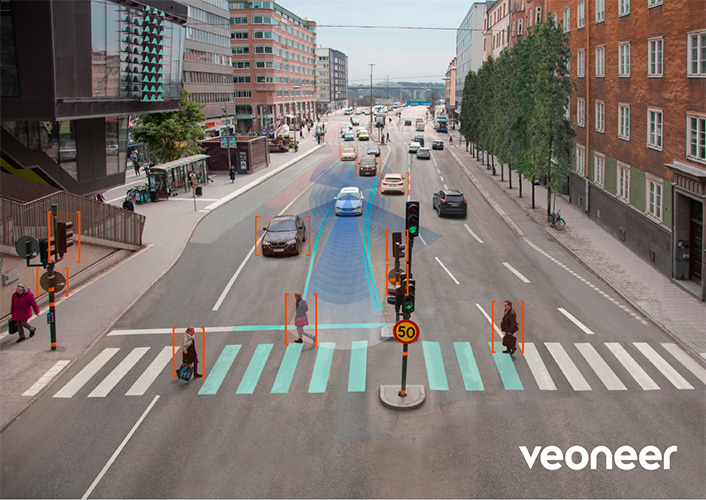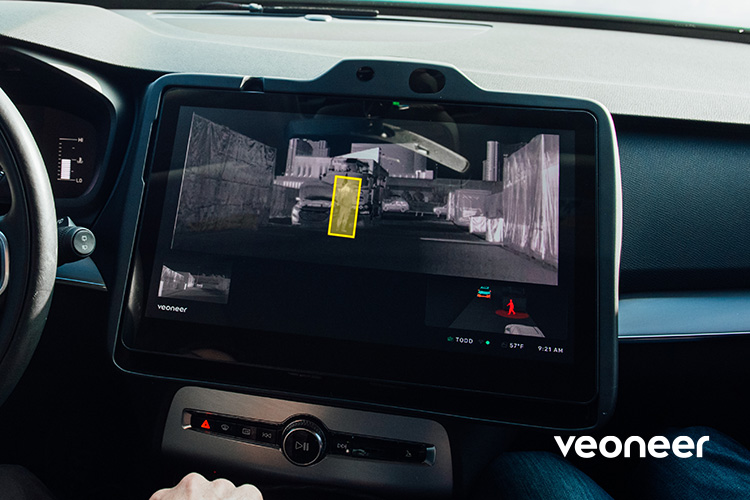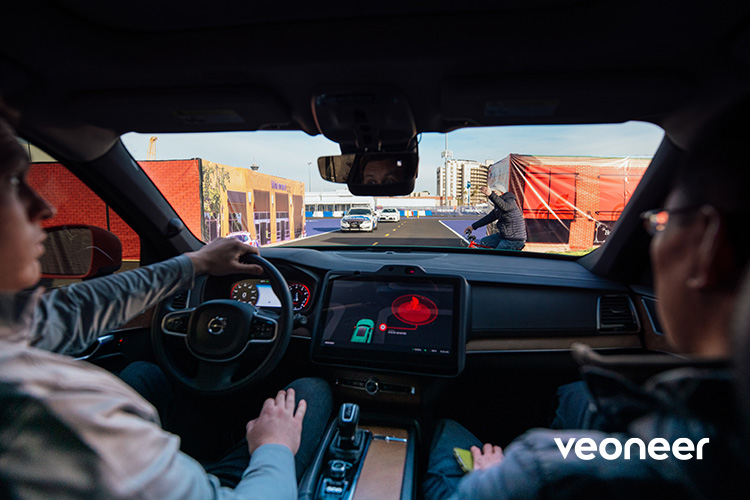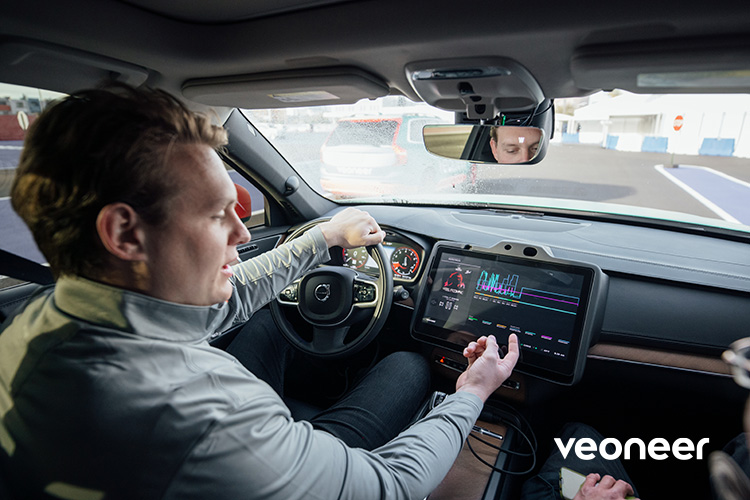- Empower global teams with an all-in-one Application Lifecycle Management (ALM) solution to support best-in-class product innovation
- Replace aging IBM DOORs implementation with modern requirements management solution tuned into the unique needs of the automotive industry
- Align global teams with “1 Veoneer, 1 Process” mandate
- Meet stringent end-to-end traceability and automotive Software Process Improvement and Capability Determination (SPICE) compliance requirements
A leader in automotive safety
Like the airbags and safety restraints for which it’s known, Veoneer is the supremely capable, yet silent, partner behind the world’s most advanced vehicles. Founded in 2018, this Tier 1 automotive supplier was spun off from Autoliv after decades of delivering innovative safety solutions at the forefront of automotive technology.
Veoneer is a leading provider of automotive safety systems, with annual sales of $1.66 billion in 2021. Headquartered in Southfield, Michigan, the company’s 6,100 employees span 11 countries, six manufacturing sites, and 18 technical centers bound by a common purpose—Creating Trust in Mobility.
Veoneer’s active safety portfolio spans vision, radar, lidar, and thermal sensing systems powered by Electronic Control Units (ECUs)—vehicular “brains” that build spatial awareness, interpret situations, and act in a split second to avoid an accident. When a crash cannot be avoided, the company’s passive Restraint Control Systems (RCS) come into play by tightening safety belts, deploying airbags, summoning emergency services, and recording data for post-crash analysis.
Embedded software is key to the company’s strategic competitive advantage.
A 30-year software development and engineering veteran, Brennan is responsible for managing the technical infrastructure that powers Veoneer’s global engineering workforce. Yet when it came time to selecting a new ALM solution, Brennan purposely took a back seat. “I was not involved because we wanted to have end user and engineering feedback determine which tool to roll out,” he explains.
Outfitting global teams for success
In 2018, the company embarked on a search for a single ALM solution to replace multiple tools used to manage its global systems delivery process. Like many technical organizations, the company’s tooling infrastructure had evolved over decades, with pockets of users relying on single-purpose solutions with weak or brittle lifecycle integrations.

The most urgent need was to replace an aging IBM DOORS requirements management solution that would soon be at the end of its life. Rather than endure a painful and costly upgrade to another standalone solution, the company decided to search for an alternative that could support the entire product delivery lifecycle.
A team defines the company’s robust engineering process from requirements management through validation. “We call it 1V1P—1 Veoneer, 1 Process,” says Brennan, referencing a customized version of the familiar engineering V-model. “Our engineering teams use templates defined by the 1V1P teams. These templates cover a Waterfall/Agile methodology that supports both kanban and scrum methods. This is how we meet all of our standards the Veoneer way.”
Structured evaluation
The search for a new ALM solution was structured, methodical, and thorough, Veoneer tapped key stakeholders in its product assurance, program management, and engineering teams to lead the evaluation.
Key selection criteria included ease of use, full coverage of the software and systems development cycle, and end-to-end traceability. The ability to customize and control the product delivery process was also deemed critical to success.
The evaluation team looked at both ALM and standalone solutions
– Tim Brennan, IT ALM Engineering Manager, Veoneer
Codebeamer also excelled at meeting the automotive industry’s stringent compliance requirements. Explains Brennan, “The automotive industry has multiple ISO standards to follow. You have ISO 26262, FMEA, Automotive SPICE, security standards. Right out-of-the-box, Codebeamer supports all of it.” Brennan also noted, “Codebeamer out-of-the-box gives you real-time traceability across the V-cycle. It’s one of a few commercial products that actually do that,” says Brennan. “If I want to do the entire lifecycle in one tool, this was the answer.” The selection was finalized, and rollout began across the organization’s global locations.
Rollout and expansion
Brennan used Codebeamer as the project repository for the ALM implementation project itself. “It’s so versatile, I can use it for IT engineering,” he explains. The company’s requirements for its ALM solution were loaded into a Codebeamer project. Brennan uses the project to validate the company’s requirements and manage a backlog of outstanding ALM requests. Whenever Codebeamer or a tool that integrates with it is upgraded, he conducts regression testing to help ensure that nothing was broken in the upgrade.
In the past, users required two-and-a-half days of training to learn their way around the ALM solution. Today, Brennan accomplishes the same goal with a 45-minute training video.
The company relied on PTC-certified services partner Nanga Systems to support a multitude of planned and ad-hoc implementation needs, from porting data from point-product solutions to fine-tuning system performance and validating the accuracy of automated import and transformation procedures. “Nanga is the best contract house I’ve ever worked with,” recalls Brennan, “and I’ve worked with a lot. Whatever we needed, all I had to do was ask. They just got things done.”

Brennan also tracks company usage data (from Codebeamer, of course). In the first year of the rollout, Codebeamer uptake grew from 1,100 to 3,800 employees. The following two years, it expanded to 6,900 employees, including departments that had never used ALM before.
Enabling key strategic initiatives
The Codebeamer solution has helped the company unify multiple departments under the 1V1P (1 Veoneer, 1 Process) umbrella.
Process engineers rely on Codebeamer to codify and enforce the Veoneer Way across teams and disciplines. For software, hardware, mechanical, and electrical engineering teams, Codebeamer serves as a single source of truth for managing requirements, source code, and test results at the unit, component, and product level. Manufacturing teams use it to track manufacturing defects (noncomformances) and conduct failure modes and effects analysis (FMEA). Auditors rely on it to make every product audit-ready through end-to-end traceability and built-in regulatory documentation.

With everyone on the same solution, everyday questions can be answered quickly and authoritatively—helping Veoneer accelerate development cycles in a fiercely competitive market.
New engineers can get up to speed quickly and easily from any location with a 45-minute training video—replacing four-and-a-half days of training. The reduced training time improves time to value for both on-premises and remote employees.
– Tim Brennan, IT ALM Engineering Manager, Veoneer
Not only was the Codebeamer solution vastly superior, it also cost less. “Between the combined cost (of DOORS and other tools), we are realizing substantial savings (on direct tooling costs),” Brennan notes.
Steering into the future with confidence
In the rapidly evolving automotive industry, the only constant is change. Automotive manufacturers and suppliers are preparing for the electrified, autonomous future of mobility. Brennan believes that while organizational boundaries may shift, the demand for innovation will only grow.
“We’ve spent 20 years looking outside the vehicle trying to keep it safer. Now we’re looking inside the vehicle to make it safer for occupants. For example, the way an airbag gets deployed will change depending on whether you’re male or female, young or old, tall or short,” he says. With Veoneer at the wheel, the future of automotive safety is bright.